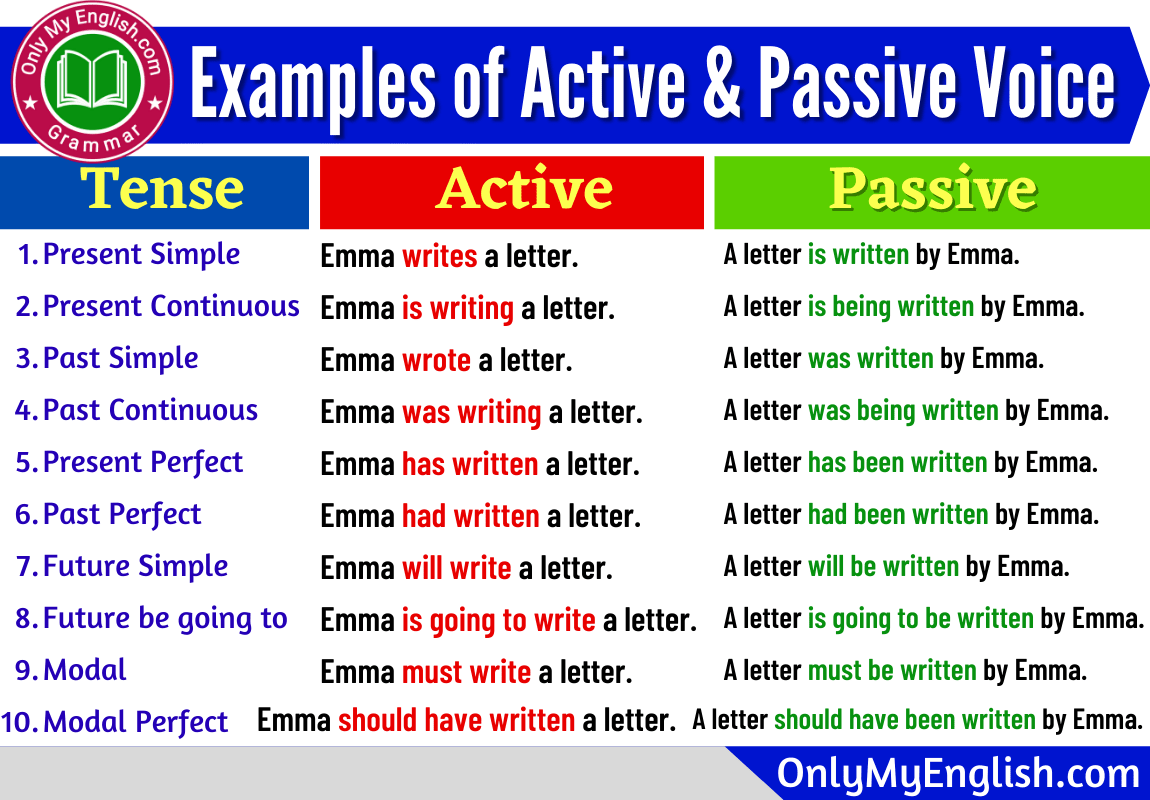Active voice and passive voice are two different ways to structure a sentence. In active voice, the subject of the sentence performs the action, while in passive voice, the subject receives the action. Understanding the difference between the two can help improve the clarity and effectiveness of your writing.
When using active voice, the subject of the sentence is doing the action. This makes the sentence more direct and engaging for the reader. On the other hand, passive voice can sometimes be more appropriate when the focus is on the recipient of the action or when the subject is unknown or less important.
Examples of Active Voice and Passive Voice
1. Active voice: The teacher graded the students’ papers.
2. Passive voice: The students’ papers were graded by the teacher.
In the active voice example, the subject “the teacher” is performing the action of grading the papers. In the passive voice example, the subject “the students’ papers” is receiving the action of being graded.
3. Active voice: The chef prepared a delicious meal.
4. Passive voice: A delicious meal was prepared by the chef.
Here, the focus shifts from the chef in the active voice sentence to the meal in the passive voice sentence. Both forms are grammatically correct, but the choice between them depends on the context and emphasis of the sentence.
5. Active voice: The company launched a new product last week.
6. Passive voice: A new product was launched by the company last week.
In this pair of examples, the active voice conveys a sense of action and agency with “the company” as the subject, while the passive voice places more emphasis on the product being launched.
Overall, using active voice can make your writing more concise and engaging, while passive voice can be useful in certain situations for varying the sentence structure. By understanding the differences between the two, you can choose the most appropriate voice to effectively communicate your message.
